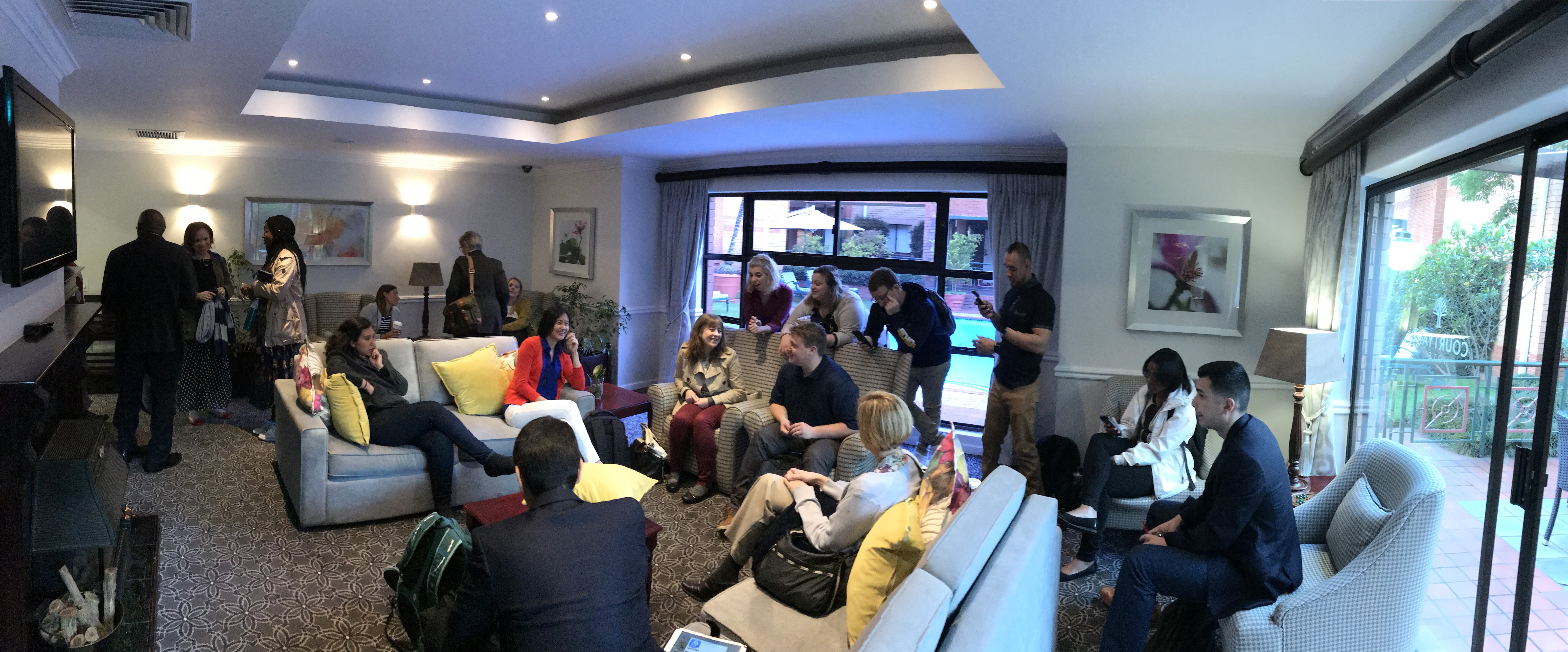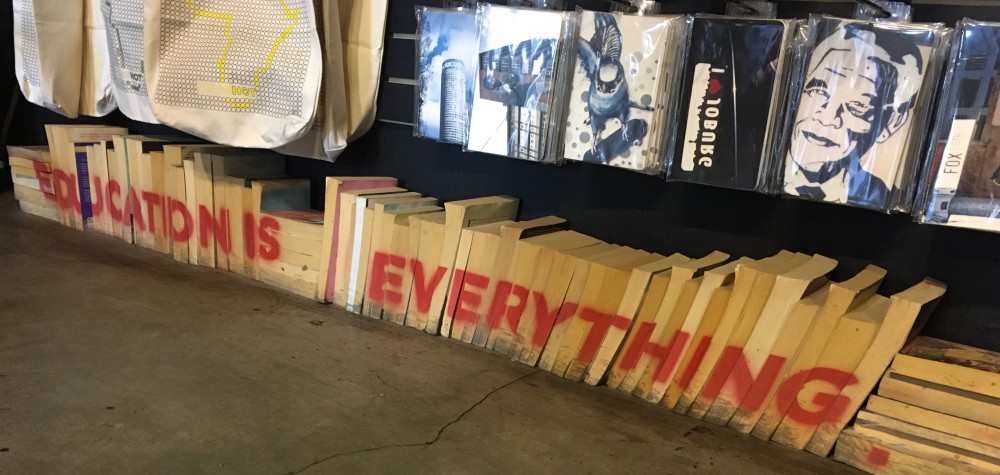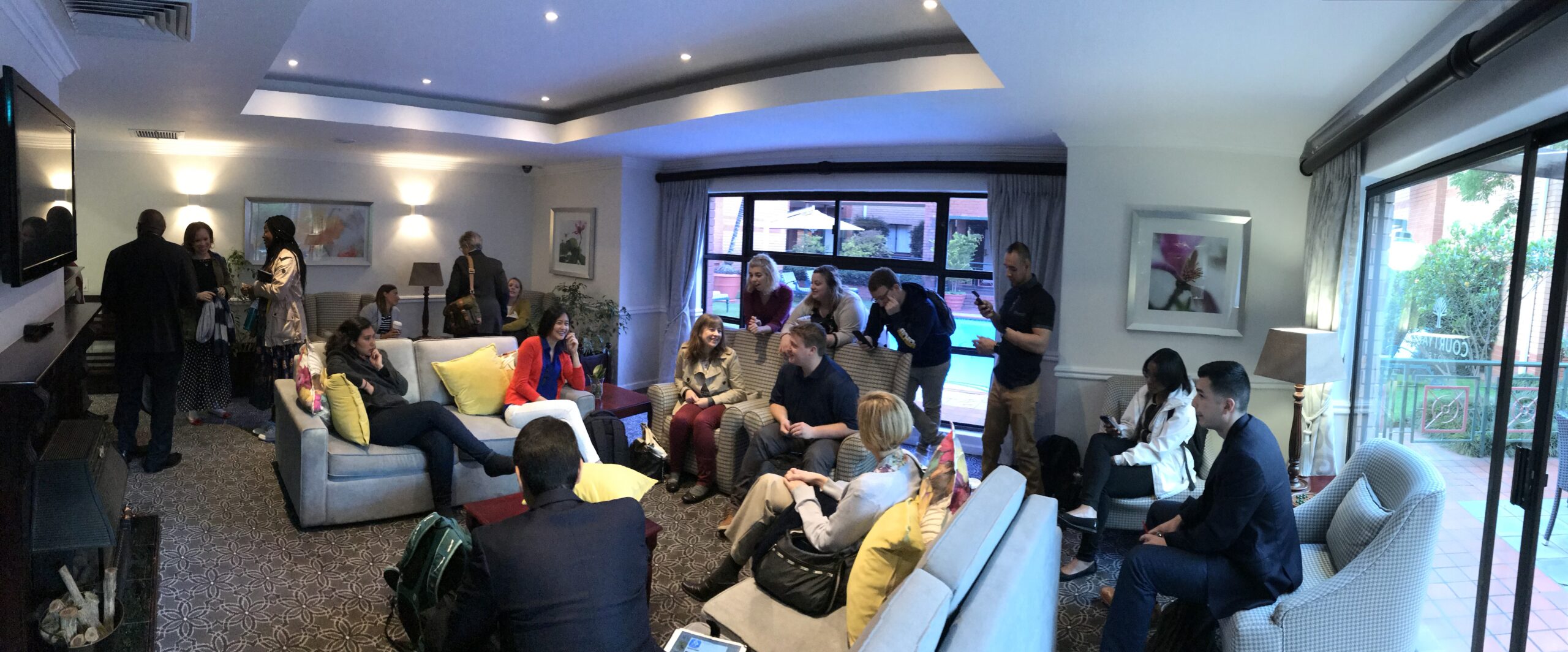Dr. Francois Strydom joins us for a late-day conversation to introduce us to the University of the Free State (UFS), which has one of the longest running access programs in South Africa.

The following morning, at the SANRC 1st-year experience conference, we hear more about programming at UFS from colleagues of Dr. Strydom directly involved in a Siyaphumelela project which supports student transition and success.
University of the Free State conversation with Francois Strydom
Upon returning to the hotel after visiting the University of Witwatersrand, we were very honored to have Francois Strydom join us for a conversation entailing his view and impact on higher education in South Africa. Dr. Strydom, the lead instigator of the South Africa Survey of Student Engagement (SASSE), has worked with George Kuh at Indiana University at Bloomington. He was also very knowledgeable about our own center (CSHPE), as he used the center as a model to develop his own at the University of the Free State.
Dr. Strydom began our conversation with a brief breakdown of South African higher education as a whole, highlighting many of the challenges that the country faces and the success they have seen. We were introduced to a number of concepts around race that we had not necessarily encountered thus far on our trip. Dr. Strydom brought up the term “black diamond,” which refers to black individuals who have moved into the middle class, particularly young, black professionals. According to Strydom, much of the marketing in the country has shifted greatly since the fall of Apartheid to focus on young, up-and-coming black people – which is reflective of the growth of the black middle class, a success for the country thus far.
An interesting concept that Dr. Strydom brought up to the group was the concept of the inverted pyramid. The pyramid contained three sections, Primary education, intermediate level education (i.e. technical and vocational training), and four-year institutions. The size of each section of the triangle refers to the capacity at which the country has for each level of education. Strydom referred to the upright triangle, with primary education on the bottom and four-year institutions at the top as the ideal, but he said the South African higher education system is very much inverted. The country has more capacity at the four-year institution, but is lacking on the primary education. The problem with the inverted pyramid is that, though the country has the capacity for students to move into higher education, there is a great inequality amongst students to the lack of capacity and resources amongst primary education schools.
Another inequality that was highlighted in this discussion revolved around the breakdown between Technical and Vocational Education and Training schools (TVETs) and your typical four-year institution. Looking at graduation rates, TVETs only have a 4% success rate. Due to this, there is a lack of students and families that wish to attend these institutions, as well as a lack of faculty and staff that wish to work at TVETs. There is also a pressure for the lower class individuals to attend a university, as they see this as a way in which they can help their family into the middle class.
The final part of our discussion centered on race and racial inequalities that continue to exist within the country. This conversation was particularly interesting, as we were able to get a very critical perspective on the inequalities that continue to exist within the country. Overall, the conversation with Dr. Strydom was extremely fruitful, and we left for the night with a new basis for the rest of our trip.
–Darin Martin, master’s student

